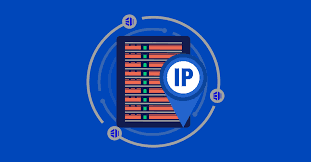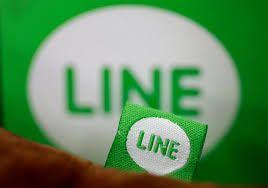Planning Employee Perks and Benefits for the Post-Pandemic Workplace

LIKE.TG 成立于2020年,总部位于马来西亚,是首家汇集全球互联网产品,提供一站式软件产品解决方案的综合性品牌。唯一官方网站:www.like.tg
The needs of the modern workforce are constantly evolving with the socio-economic as well as cultural and generational trends. It’s a natural process that companies need to monitor and adapt in order to stay relevant and retain a positive employer brand and increase employee engagement and happiness. This has been true in the pre-pandemic era and it’s true today.
That said, every once in a while we are faced with a disruptive new trend or an unforeseen circumstance that can rapidly change our way of life. The COVID-19 pandemic is a prime example of one of the most disruptive events since the economic crash of 2008, and while the economic effects of the pandemic have stabilized in many parts of the world, the ramifications will be felt for years to come.
Specifically, business leaders are now faced with a new demand to reframe and rethink the perks and benefits offered to employees as well as changing the dynamics of employee engagement beyond the COVID-19 pandemic era. That’s why today we are going to talk about the best ways to build a new perks and benefits plan to build a better work life balance for your employees, keep them happy and engaged, and ensure a high talent retention rate.
1. Understand how the Pandemic has Impacted the Workforce
Without a doubt, the pandemic has had a profound effect on the global workforce. While it’s good to see that, according to the latest engagement statistics, employee engagement didn’t drop due to the pandemic, the COVID-19 crisis has brought numerous other challenges to light.
For one, your employees might still feel engaged, but that doesn’t mean that their happiness levels, feelings of professional and personal security, or overall job satisfaction are the same as they were. In fact, the pandemic has sowed the seeds of doubt and even panic in many employees who have been fearing for their job security throughout the COVID-19 crisis.
What’s more, don’t forget that the most common challenges of working remotely have now been amplified by the effect of the pandemic, and so managers need to work extra hard to create a productive and safe remote work environment in the new normal.
Keeping all of that in mind, it’s important to start thinking of the quality of life improvements through concrete perks and workplace benefits that will help the employee experience and allow them to thrive. Let’s see how you can create a winning plan.
2. Define Your Benefits Objectives and Budget
The goals of your employee assistance programs EAPs are obvious: to promote happiness and wellbeing in the workplace, to elevate engagement and productivity, and to create a culture and environment of continuous advancement for the growing number of concerned professionals. But to achieve those goals, you need to have clear objectives for your new benefits plan, and you need to have a clear budget in mind.
That’s because, in many workers’ minds, what they see as a perk or benefit has changed. For example, before the pandemic, working remotely was seen as a perk, but for many people, it’s now a standard expectation.
Conversely, when everyone worked together in an office, having access to productivity tools was considered a standard part of the job, but now (at least for work-from-home employees) it’s considered a benefit. So, everything is changing, and that affects your planning and budgeting.
To budget properly, you should know what kind of perks are taxable. For example, employee gift cards (such as one for a coffee store) are taxable, even if they’re for as little as $5, while physical gifts (such as a coffee mug or bag of coffee beans from that same store) are not, as long as they don’t have a higher cash value that crosses the threshold of tax regulations. Knowing the difference will help you prepare a detailed budget and know how much you can allocate towards various perks and benefits without raising your employees’ taxes. To make this easier, consider using a tax calculator to estimate the tax implications of various perks and benefits.
If one of the benefits is to provide employees with more paid time off to ensure employee mental health support and prevent burnout, then you need to do so in a transparent, balanced, and fair way so that all employees (in the office or remote) are treated equally. To do that, follow a PTO accruals guide, which will also help you figure out how this benefit will affect your company financially in the long run. The same goes for any high-value perk you introduce into your organization.
That’s why you need to be clear on your objectives. Keeping in mind how the pandemic has affected the mental health of employees worldwide, your key objectives should be to:
-
Elevate happiness and minimize stress
-
Prevent and battle burnout
-
Come up with hybrid work arrangements that benefit all
-
Elevate employee job security
-
Create a more flexible schedule to elevate productivity
-
Help employees reconnect in the workplace
-
Allow employees to continue advancing professionally
-
Ensure higher health care benefits in a post-pandemic environment
3. Conduct a Needs Assessment
To create an effective plan and achieve your goals, you need to elicit employee feedback and take a proactive approach to needs assessment. Don’t think that the general trends or statistics are the only data points you need to identify the right mental health benefits for your employee collective. Instead, use your human resources experts to meet with your teams and individuals to discuss their needs and aspirations. In those meetings, ask a lot of open-ended questions and do a lot of listening so that you can design surveys and follow-up questions that are meaningful to your workforce, not just the general population.
When you do, you might find out that your employees…
-
Don’t need a communal chill zone so much as they want to acquire new skills and advance their careers.
-
Want to improve their team’s results, but don’t have access to the data they need to make the best decisions (especially remote employees and teams).
-
Want to feel connected, yet complain that far too much of their time is wasted in meetings that use their time unproductively.
As approaches to these findings, you’ll want to concentrate on solutions such as learning how to conduct meetings with your team more effectively, or researching and sponsoring online course providers where employees can choose to advance their skills at whatever time is best for them. And you might want to invest in technology having best VPN services for remote employees to restore and improve sales data quality, as such information is essential to most decision-making.
This way, you will effectively be their growth provider and inspire them to remain loyal and devoted to your brand. Also, advanced training lets employees use their new skills to add value to your business instead of searching for better opportunities.
As you can see, it’s not only important to assess their needs, you also need to act on those needs in a timely manner.
4.Use the Data to Create a Comprehensive Plan
Once you have conducted your research and have talked extensively with your employees to identify their drivers and needs, it’s time to draft your action plan. You need to create a detailed perks and benefits plan that you can put into effect quickly, complete with timelines, financial projections, objectives, and other important details for the management and the employees.
These financial projections will feed into your financial data over the long run, and can help you improve your data quality and cost of talent acquisition, retention, and more. Even though you are using data and financial planning to orchestrate your perks and benefits, remember that your plan needs to take employee feedback into account as the most important determinant of how to create a hierarchy of needs.
In other words, perks should be prioritized according to employee needs and aspirations in the post-pandemic workplace, complemented by the trends in your industry and the engagement statistics we mentioned earlier to create a long-term approach.
That said, gathering data is only half the battle. It has to be communicated to audiences in ways they can absorb. For instance:
-
Upper management will want a comprehensive financial overview that is refreshed in real time (or at least with regular frequency), so your employee-related data needs to feed into related dashboards.
-
Managers and HR leaders will need data that pertains to their teams. If you have a comprehensive internal website, you’ll want to add authorized access to this kind of information so it’s available to relevant employees.
-
Employees need to know overall numbers to measure progress, make comparisons, and guide their ideation. If you don’t have a comprehensive online resource for data shared with employees, consider establishing one, especially if your workforce is remote. (Here’s an example of small business website development costs to give you an idea of what such a project might entail.)
5. Monitor the Effectiveness of the Plan and Optimize Periodically
Now that you have introduced your big perks like more paid time off or employee training programs, as well as your branded company swag such as custom T-shirts, coffee mugs, and frisbees, it’s time to see if your employee engagement strategy is paying off. You need short-, mid-, and long-term KPIs in order to gauge the effectiveness of your new perks and benefits.
Some of the short-term KPIs include:
-
Productivity fluctuation within a month
-
Happiness levels in the same timeframe
-
Return value on completed training programs
-
Engagement fluctuation
-
Remote employee presence and activity on time-sensitive projects
-
Short-term culture improvement
Some of the mid-term KPIs include:
-
Employee happiness and zeal within three to six months
-
Financial returns on investment for career advancement programs within six months
-
How the perks have affected employee work satisfaction or have prevented burnout
-
Increased productivity levels on mid and long-term projects
-
How the perks have affected your talent acquisition and retention rate over a six-month period
For long-term KPIs, you want to monitor the same data but over a one-year period to get a sense of what has worked and what needs improving. To generate actionable insights, however, you need to conduct periodical surveys and talk with your employees to get valuable, first-hand feedback.
Over to You
The pandemic has been a transformative experience for employees all around the world, and the needs of the modern workforce have begun to change once more. As a business leader, one of your top priorities should be to create a new perks and benefits plan for the post-pandemic workplace that will ensure employee happiness and engagement in the years to come.
Use this guide to identify the perks your employees truly need and want, and then implement them efficiently and effectively throughout your organization.
About Author: This article is written by our marketing team at LIKE.TG. LIKE.TG is dedicated to providing powerful solutions for your HR teams and creating an exceptional employee experience. Our aim is to help your company improve employee engagement, onboarding, and to save you valuable time!

LIKE.TG 专注全球社交流量推广,致力于为全球出海企业提供有关的私域营销获客、国际电商、全球客服、金融支持等最新资讯和实用工具。免费领取【WhatsApp、LINE、Telegram、Twitter、ZALO】等云控系统试用;点击【联系客服】 ,或关注【LIKE.TG出海指南频道】、【LIKE.TG生态链-全球资源互联社区】了解更多最新资讯
本文由LIKE.TG编辑部转载自互联网并编辑,如有侵权影响,请联系官方客服,将为您妥善处理。
This article is republished from public internet and edited by the LIKE.TG editorial department. If there is any infringement, please contact our official customer service for proper handling.


















